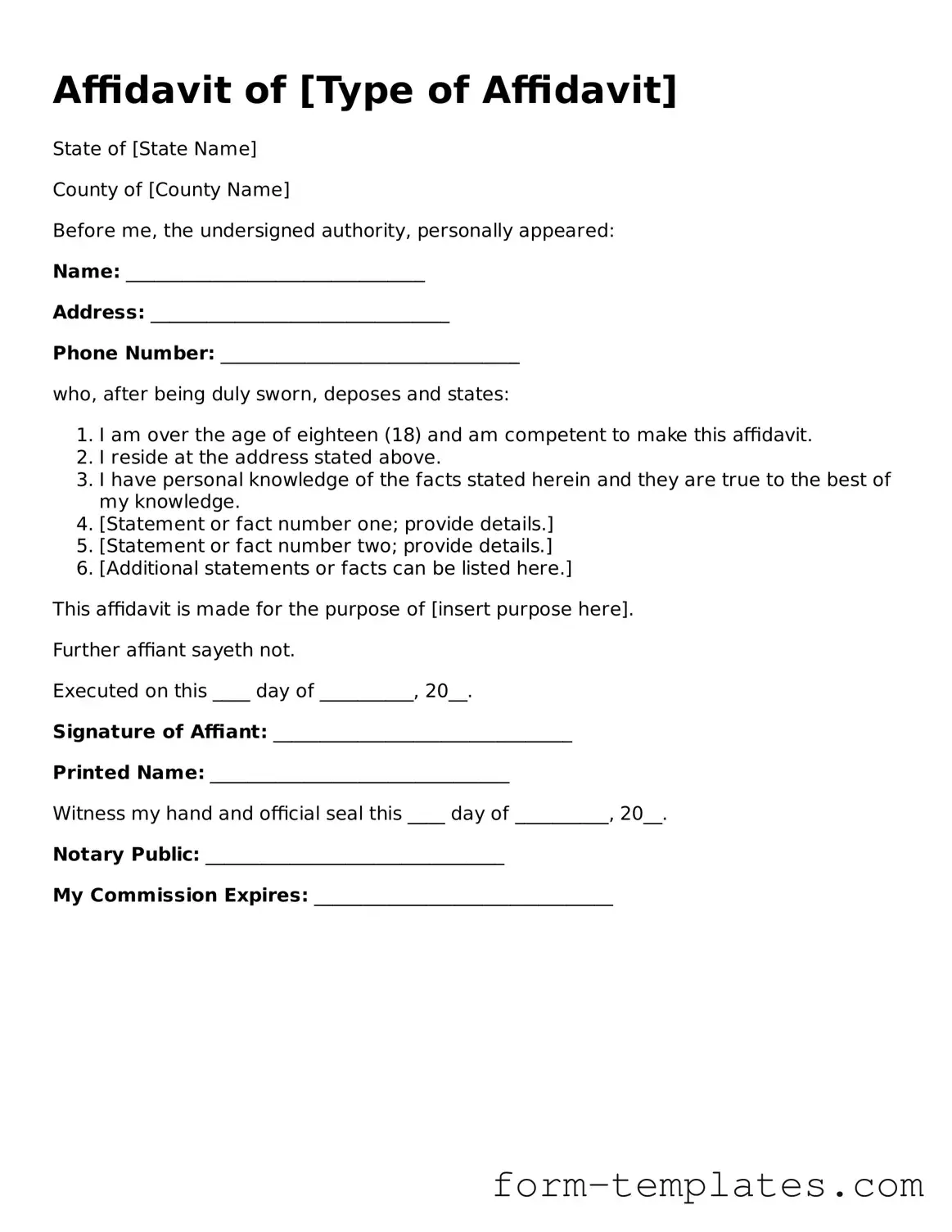Affidavit of [Type of Affidavit]
State of [State Name]
County of [County Name]
Before me, the undersigned authority, personally appeared:
Name: ________________________________
Address: ________________________________
Phone Number: ________________________________
who, after being duly sworn, deposes and states:
- I am over the age of eighteen (18) and am competent to make this affidavit.
- I reside at the address stated above.
- I have personal knowledge of the facts stated herein and they are true to the best of my knowledge.
- [Statement or fact number one; provide details.]
- [Statement or fact number two; provide details.]
- [Additional statements or facts can be listed here.]
This affidavit is made for the purpose of [insert purpose here].
Further affiant sayeth not.
Executed on this ____ day of __________, 20__.
Signature of Affiant: ________________________________
Printed Name: ________________________________
Witness my hand and official seal this ____ day of __________, 20__.
Notary Public: ________________________________
My Commission Expires: ________________________________
